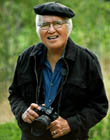|
|
 
|
|
Author
|
Topic: 'Pink films'
|
Peter Berrett
Jedi Master Film Handler

Posts: 602
From: Victoria, Australia
Registered: Nov 2000
|
 posted 09-14-2002 05:25 AM
posted 09-14-2002 05:25 AM





Hi allLast night I first outside screening of a movie at the 'Boronia Twin Drive-in' . I hung a 2400 x 1200mm melamine board on my gate (white) and projected onto that. Its quite smooth and very white. The projected image ended up being about 1300mm x 1000mm approximately. As the surface was quite reflective the 250 watts from my projector gave quite a clear, bright steady image. I was impressed with the overall effect of 16mm. With a good surface, print, and bulb the results can be outstanding for outdoor home use. A passer-by who peeked in was quite impressed! I think this qualifies as a case of FDR! The film I projected was 'What's Up Doc' and it was in good condition however as the title of this post suggests it had started to go a bit pink. No scratches though! I was just wondering whether anybody had dreamed up a color-correction solution for projecting films that had gone a little pink. Did anybody ever develop a sort of lens filter which compensated by filtering the redness a bit? Thanking you cheers Peter
| IP: Logged
|
|
|
|
|
|
|
|
|
|
|
|
|
|
|
|
|
|
John Pytlak
Film God

Posts: 9987
From: Rochester, NY 14650-1922
Registered: Jan 2000
|
 posted 09-15-2002 07:50 AM
posted 09-15-2002 07:50 AM





Dye fading usually changes the CONTRAST of the image --- the dark areas of the picture lose more density than the light areas. Since it is not an overall uniform density shift, filtering during projection will help, but will not fully correct the faded image. For example, using a cyan-colored filter may correct the midtones and fleshtones, but the highlights will tend toward cyan, while the shadows will still be too warm.Motion picture printers have long used "additive" light sources, where the amounts of red, green and blue light can be adjusted on a scene-by-scene basis:
http://www.kodak.com/US/en/motion/support/h1/printingP.shtml#plusminus ------------------
John P. Pytlak, Senior Technical Specialist
Worldwide Technical Services, Entertainment Imaging
Research Labs, Building 69, Room 7525A
Rochester, New York, 14650-1922 USA
Tel: +1 585 477 5325 Cell: +1 585 781 4036 Fax: +1 585 722 7243
e-mail: john.pytlak@kodak.com
Web site: http://www.kodak.com/go/motion
| IP: Logged
|
|
|
|
|
|
Peter Berrett
Jedi Master Film Handler

Posts: 602
From: Victoria, Australia
Registered: Nov 2000
|
 posted 09-20-2002 09:09 PM
posted 09-20-2002 09:09 PM





Thanks LindsayWhere can I order one? Got a telephone number, link or email address? cheers Peter
| IP: Logged
|
|
Peter Berrett
Jedi Master Film Handler

Posts: 602
From: Victoria, Australia
Registered: Nov 2000
|
 posted 09-21-2002 03:53 AM
posted 09-21-2002 03:53 AM





Hi againTo get an idea about what 'What's Up Doc' looked like in its original color I rented a copy of the movie on VHS today. The copy had been produced a couple of years ago. To my surprise the copy had a green tinge and the color seemed faded. So I have some questions: 1. Why would the above film have this tinge? Wouldn't the VHS film have been produced from a good quality negative? Do film companies care much when producing films on VHS? 2. Have the film companies kept good quality negatives of films produced in the early seventies or have they let the originals simply fade and go to red? Do they care? cheers Peter
| IP: Logged
|
|
|
|
|
|
All times are Central (GMT -6:00)
|
|
Powered by Infopop Corporation
UBB.classicTM
6.3.1.2
The Film-Tech Forums are designed for various members related to the cinema industry to express their opinions, viewpoints and testimonials on various products, services and events based upon speculation, personal knowledge and factual information through use, therefore all views represented here allow no liability upon the publishers of this web site and the owners of said views assume no liability for any ill will resulting from these postings. The posts made here are for educational as well as entertainment purposes and as such anyone viewing this portion of the website must accept these views as statements of the author of that opinion
and agrees to release the authors from any and all liability.
|

 Home
Home
 Products
Products
 Store
Store
 Forum
Forum
 Warehouse
Warehouse
 Contact Us
Contact Us




 Printer-friendly view of this topic
Printer-friendly view of this topic


















